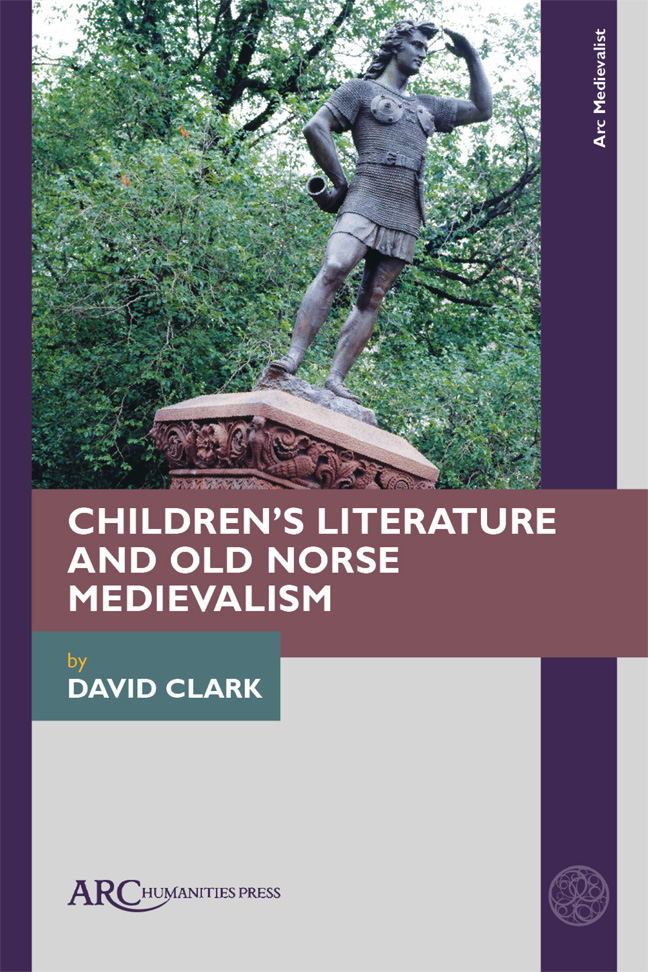Book contents
- Frontmatter
- Contents
- Acknowledgements
- Dedication
- Introduction: The End
- 1 Age-Related Categories
- 2 Generic Categories
- 3 Transformational Fantasy
- 4 Horned Helmets and Comic Anachronism
- 5 Viking Reputation
- 6 Runes and Magic
- 7 The Power of Story
- 8 Race and Ethnicity
- 9 Heroism
- 10 Viking Masculinity
- 11 Viking Femininity
- 12 Viking Sex and Gender
- 13 Bowdlerization
- 14 Sexuality
- 15 Ecological Threat
- 16 Norse Medievalism in Alan Early's Father of Lies Trilogy
- 17 Avoiding the End of Days: K. L. Armstrong and M. A. Marr's Blackwell Pages
- 18 Rick Riordan's Magnus Chase Series and Norse Medievalism
- Conclusion
- Select Bibliography of Frequently Cited Works
- Index
6 - Runes and Magic
Published online by Cambridge University Press: 17 February 2024
- Frontmatter
- Contents
- Acknowledgements
- Dedication
- Introduction: The End
- 1 Age-Related Categories
- 2 Generic Categories
- 3 Transformational Fantasy
- 4 Horned Helmets and Comic Anachronism
- 5 Viking Reputation
- 6 Runes and Magic
- 7 The Power of Story
- 8 Race and Ethnicity
- 9 Heroism
- 10 Viking Masculinity
- 11 Viking Femininity
- 12 Viking Sex and Gender
- 13 Bowdlerization
- 14 Sexuality
- 15 Ecological Threat
- 16 Norse Medievalism in Alan Early's Father of Lies Trilogy
- 17 Avoiding the End of Days: K. L. Armstrong and M. A. Marr's Blackwell Pages
- 18 Rick Riordan's Magnus Chase Series and Norse Medievalism
- Conclusion
- Select Bibliography of Frequently Cited Works
- Index
Summary
ALTHOUGH RUNES ARE sometimes used for magical purposes in Norse literature, we know very little about any magical uses in real life. As we’ve seen earlier, it's not possible to tell how far people literally believed the Norse myths, and this includes the accounts of runic magic in eddic poems like Havamal. What's more, any written accounts of Norse paganism were necessarily written after the introduction of Christianity (and thus the Roman alphabet) to Scandinavia and Iceland, and so accounts may have been invented either to discredit paganism by Christian scribes, or saga authors may have used or embellished them for literary purposes such as to provide historical or lurid “flavour.” The runic alphabet (the “futhark”) was historically often used for quite straightforward purposes like inscriptions on monuments, and specific magical meanings attributed to particular runes generally derive from twentieth-century neo-paganism.
Nonetheless, runic magic is often associated with the Vikings in the popular imagination and in some children's literature. Other authors, however, use runes more soberly as a form of communication; still others present them as a metaphor for the power of literature and art.
Viking It and Liking It
We’ve already considered Scieszka's development of the Norse celebration of posthumous reputation in Viking It and Liking It. Scieszka also presents the Vikings as superstitious or credulous via their putative belief in runic magic. The child protagonists try to persuade the Vikings not to kill them by claiming to know magic. Bullshik thinks they mean “the runes everlasting, the runes life-giving” and quotes part of a poem:
How to tell men's thoughts?
Blunt sword blades, calm the wild waves?
Understand the cries of birds? (28)
Though most children's novels connect runes and rune-lore with Odin (usually drawn from Havamal), these questions and abilities more closely resemble the runic knowledge expounded by the valkyrie Sigrdrifa in The Lay of Sigrdrifa. In fact, however, the “magic” the boys possess consists merely of the schoolboy parlour-tricks Joe has learned, such as shifting his centre of gravity to make it impossible for anyone to lift him by his elbows (32–35). The Vikings thus appear credulous and susceptible to manipulation by children who know modern “science.”
This episode does, however, recall a similar episode in the Prose Edda.
- Type
- Chapter
- Information
- Children's Literature and Old Norse Medievalism , pp. 57 - 64Publisher: Amsterdam University PressPrint publication year: 2023

